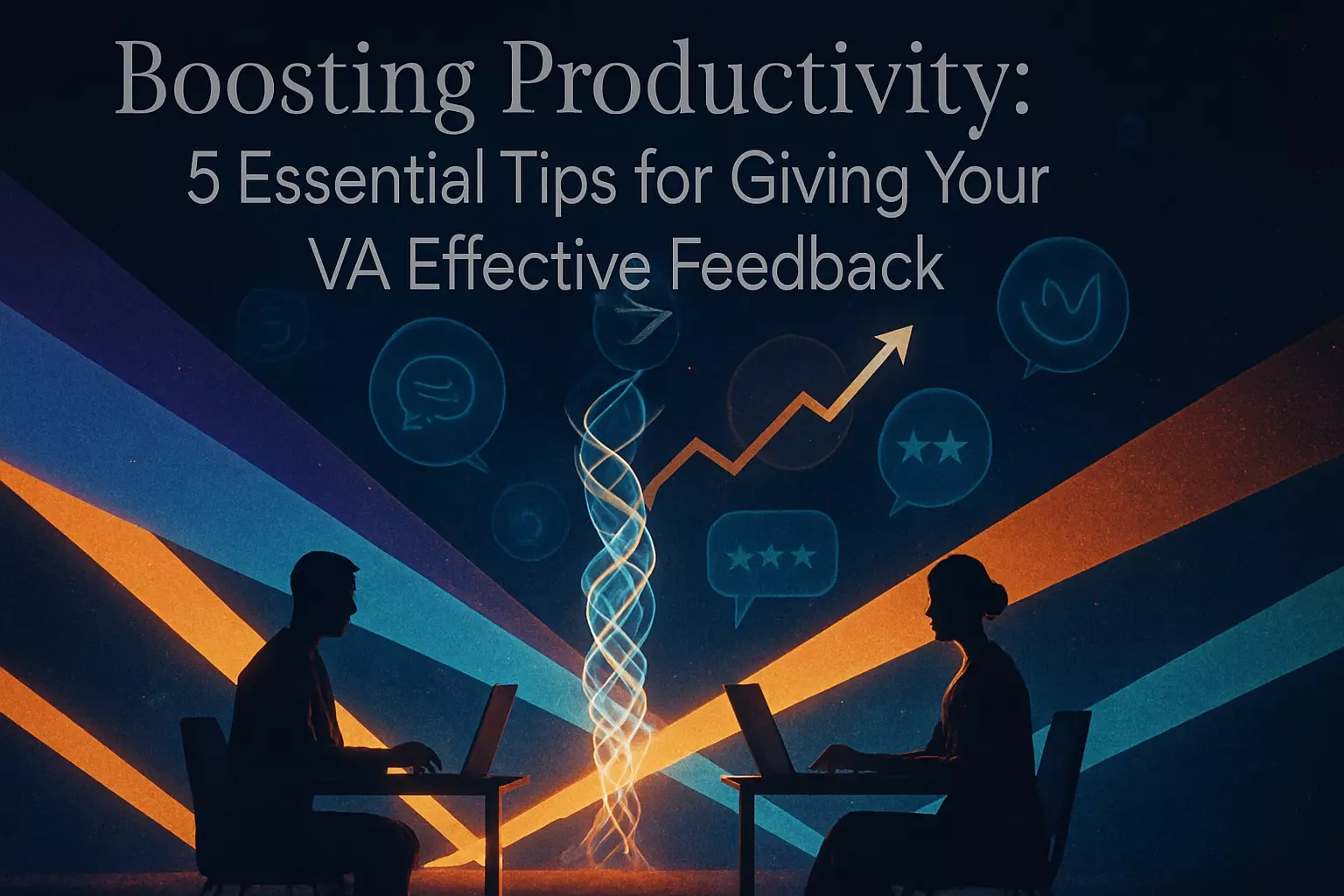Boosting Productivity: 5 Essential Tips for Giving Your VA Effective Feedback

Boosting Productivity: 5 Essential Tips for Giving Your VA Effective Feedback
Tip 1: Be Specific, Timely, and Actionable
Focus on Behavior, Not Personality
Provide Concrete Examples
Timing is Everything
Tip 2: Create a Culture of Two-Way Communication
Schedule Regular Check-ins
Ask Open-Ended Questions
Be Open to Receiving Feedback
Tip 3: Balance Constructive Criticism with Positive Reinforcement
The Power of Praise
Avoid the 'Feedback Sandwich'
Tip 4: Choose the Right Channel for the Message
Praise in Public, Critique in Private
Video Calls for Nuanced Conversations
Written Follow-ups for Clarity
Tip 5: Document Feedback and Track Progress
Use a Shared Performance Log
Set SMART Goals Together
Follow Up and Re-evaluate
Conclusion
References
Boosting Productivity: 5 Essential Tips for Giving Your VA Effective Feedback
Tip 1: Be Specific, Timely, and Actionable
Focus on Behavior, Not Personality
Provide Concrete Examples
Timing is Everything
Tip 2: Create a Culture of Two-Way Communication
Schedule Regular Check-ins
Ask Open-Ended Questions
Be Open to Receiving Feedback
Tip 3: Balance Constructive Criticism with Positive Reinforcement
The Power of Praise
Avoid the 'Feedback Sandwich'
Tip 4: Choose the Right Channel for the Message
Praise in Public, Critique in Private
Video Calls for Nuanced Conversations
Written Follow-ups for Clarity
Tip 5: Document Feedback and Track Progress
Use a Shared Performance Log
Set SMART Goals Together
Follow Up and Re-evaluate
Conclusion
References
Posted Jun 30, 2025
Transform your virtual assistant's performance with constructive feedback. Learn 5 actionable tips to improve communication, boost productivity, and build a stronger partnership.
0
10









